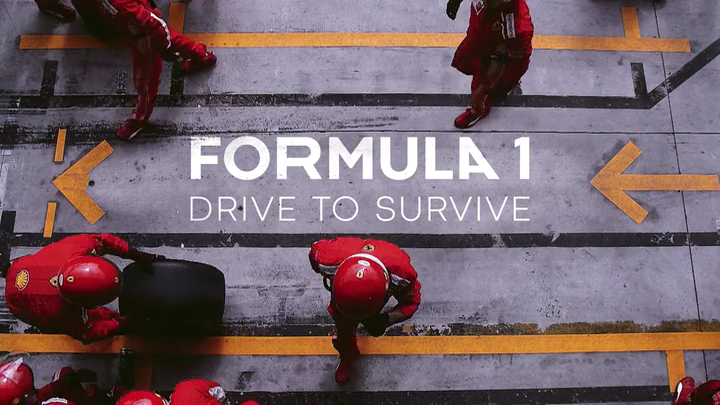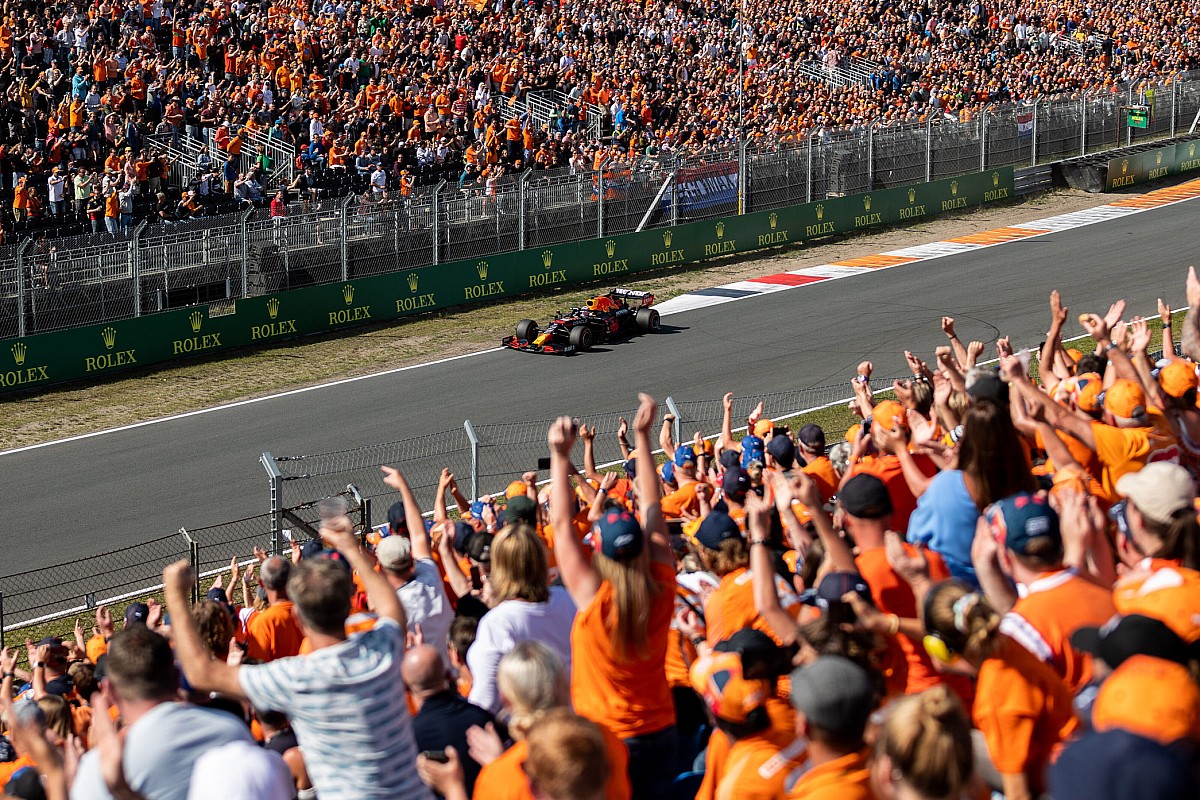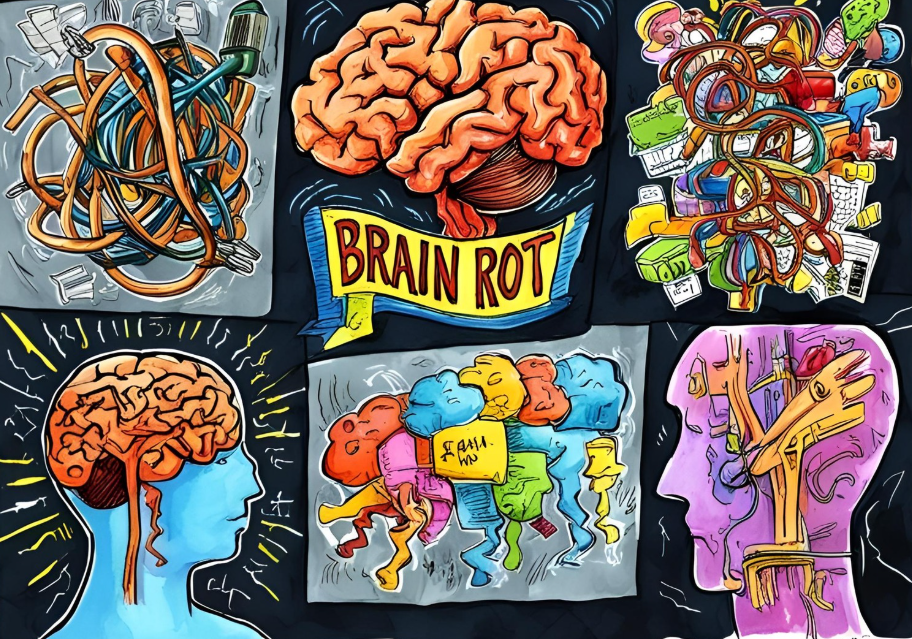Iman, Alec, Mia, and thousands of other people from different nations gather at the Lusail Circuit in Doha, with only one uniting similarity – their love for racing.
The upbeat house music, the cheers of the crowd, the loudness of the car engines as they pass by, and the frantic commentary in both English and Arabic create an atmosphere that energizes even those who do not watch F1.
Formula One racing has evolved to be the world’s largest motorsport championship, and everyone is constantly sharing their ideas and feelings about teams, drivers, team leaders, and choices on social media, with even fan pages of drivers gaining a significant following.
Thousands of fans, donning the flamboyant colors of their favorite teams, gathered to see a heated race between the drivers in the Qatar Grand Prix in 2023, determined to deal with scorching heat and a raucous crowd, with their only motivation being to see what goes on behind the scenes, to get a glimpse of the drama, the strategy and the people they’ve seen online.
The Fédération Internationale de l’Automobile (FIA) regulates this sport and establishes the rules and regulations that each team must follow. At the Grand Prix, multiple teams and drivers compete, and there are now ten teams racing, with each team having two drivers, for a total of 20 drivers on the circuits. However, before the race, qualifying rounds are held in which the slowest vehicles are eliminated.
Drivers have only 24 hours after qualifying to prepare for the final race of the weekend, as fans like Mia wait in anxious anticipation for what would be the biggest race of the weekend.
“I do get very impatient sometimes, but in the end, I know who is going to win,” she says, with full confidence in her favorite team, RedBull Racing. The drivers are supposed to line up at the start in the order concluded by the qualifying rounds, and whoever crosses the finish line first, wins. Points are awarded only to the top ten drivers, depending on where each driver finishes. At the end of the season (which includes multiple races), the team and driver with the most points wins the championship.
However, Formula One has not always been an accessible or exciting sport for everybody.
In contrast to earlier decades, when the sport was primarily followed by automobile enthusiasts and motorsport intellectuals, who were often old, rich, white men with an immense amount of free time, F1 has expanded beyond the sport’s initial target audience and now resonates with current generations of teens and young adults, who are interested in much more than just who wins or loses the race. On May 13, 1950, the inaugural race of the World Championship took place at Silverstone in the United Kingdom. It has only been in the recent 5 years that Formula One has grown to its intense popularity, with millions of viewers streaming in to watch their favorite drivers at their favorite Grand Prix for various reasons, from the relationships between the drivers to the differences between the tires and engines of each car in the race, according to the official F1 data on their website. It has expanded its demographic reach and is today, a sport that brings together individuals from all over the world.
“F1 only recently became mainstream through the Netflix documentary… it appealed to people not only into the technical side of the sport,” said Iman, an 18-year-old from Morocco, who flew in just to watch the race. Her eyes shine as she talks about her love for Carlos Sainz and how grateful she is to be here, to be at her first race, to be able to see the circuit itself, explaining how she had to plead with her parents for two weeks straight just to be here. Iman exclaims that her favorite moments at F1 races are always the live radio conversations that take place amongst the drivers, because of its authenticity and its general hilariousness. She first found out about F1 through the Netflix show “Drive To Survive”, which showcases to people the drama behind racing and the relationships between drivers and grew to immense popularity, with its viewership reaching almost 7 million. “Seeing them interact is probably the best part because it’s not something that their media team does for them,” she says.
The Netflix Effect occurs when a series on the enormous subscription streaming service propels previously unknown individuals or events to unexpected celebrity status as a direct consequence of hundreds of thousands of viewers consuming the specific show. Netflix’s television show Drive to Survive has gone on to make the drivers and team known around the world, and the series has been especially influential in reaching the global television market. It was also instrumental in attracting a new and younger public, as the research shows. According to global sports analysts Nielsen Sports, the Formula 1 audience between the ages of 16-35 has grown to more than one billion by April 2022.

“It was only when Liberty Media came into the picture, that F1 started getting more attention online,” said a young fan from India. After mass media giant Liberty Media’s acquisition of the Formula One group and its expansion to documentaries, shows, and social media, the reach of what goes on behind the scenes of racing became much less restricted. Fans and followers were no longer limited to watching only live broadcasts of the race weekends on TV and following news through international publications, they were now shown behind-the-scenes, and exposed to the dramatic reality-show effect that drew non-motorsport enthusiasts towards this sport drastically. This is what created the frenzy behind F1; it showed people that drivers are more than just athletes and delved heavily into their personal lives and complications, which the audience related to immensely.
However, devoted followers of F1 had different opinions and often looked negatively towards those who attended the sporting events only for the drama and had no real interest in the logistics and engineering behind each race. “If you’re not going through the data to predict pit-stop strategies or compare tire performances, why are you here?” questioned Alec, an avid Mercedes fan from London, a current undergraduate student pursuing a degree in Mathematics. He flew in only this morning with his father and ensured that he would get the seats for the Main Grandstands. “The tension you feel at the start is palpable,” he says and exclaims how the best seat to watch the start of the race from is his. His dad, almost as equally enthusiastic, chimes in his support for his son’s love for the sport. Alec says that he even sometimes sits with a notebook to watch the races, note down his thoughts, and then refer back to the insights posted on the F1 websites later. While it may sound unnecessary and serious to some, he claims that his love for the sport knows no bounds.
The strategy behind the time taken for a pit stop, when to take turns, what tires to use to adjust the speed, and at what lap to change tires are essential in engaging the critical thinking of the audience, permitting them to predict what would happen next before it even happens. More than the drama, it is the strategy that draws them to the race, and the chaos that is involved in determining which driver and which car had the better performance from the start to the end is what draws these young fans to be present at the races, and even fight for tickets with better views of the pit-stops or the start to justify their stance.
“Wherever Max (Verstappen) goes, I follow. Whenever he wins, I win”, said Mia, a fan from the Netherlands, currently self-employed as a life coach. The general affinity towards a driver of a certain nation and patriotism played an immense role in bringing people together to support the drivers representing their country. Such sentiments were also observed with other drivers including Charles Leclerc and his fans from Monaco, or Carlos Sainz and his fans from Spain, who flocked in the thousands to Qatar to watch the Grand Prix.

The sentiment of national pride has drawn many people from the same countries to watch and support these drivers, even though they may not care about the strategy or the drama that goes on throughout the race. The speed of the drivers has now become a matter of national pride, as they don’t just carry their own racing prodigy – the image of their nation now rests on their shoulders. People from different nations sit huddled in groups at the grandstands and wave their flags high, proud to be who they are, and proud to be at the Lusail Circuit.
The race being held at the Lusai Circuit was also observed to be a matter of pride for the many Qataris attending the weekend to host the Grand Prix, and their joy at being the host was exhibited by many of them. Following the FIFA World Cup in 2022, the population of Qataris attending large-scale sporting events has increased due to the sense of pride they gain from hosting people from all over the world, and the joy they feel from welcoming them with open arms. Thus, it can be said that where a person is from may affect why they come to watch the sport and how much they contribute to it.
Now, the world is excited to see what the future holds for F1. With the new open-book strategy that is being utilized to help F1 reach wider audiences, it is sure that the following of the sport will only increase. Furthermore, with its expansion into e-sports and Formula-E (Electric Car racing), Formula One intends to reach a much more diverse audience, which will not only provide the fans with more content but also with more glamour, more participants, more strategy, and more chaos, all essential to its fame. In the words of Alec: “F1 is no longer just a sport… it is now a religion, a very pompous one.”







